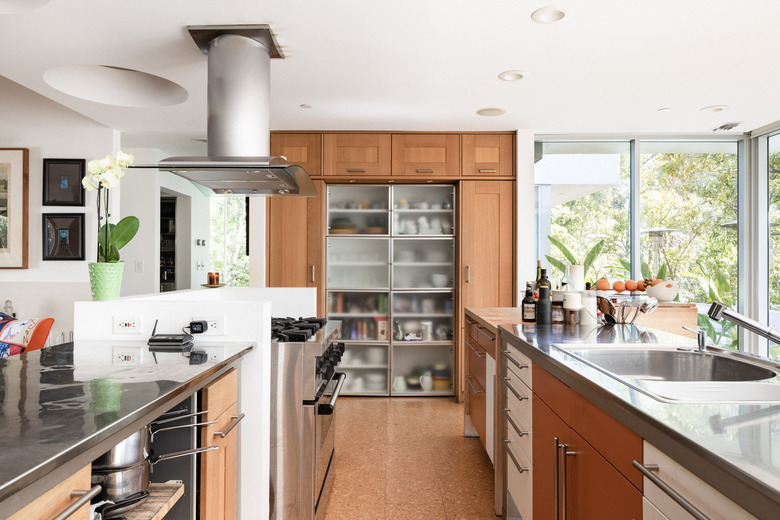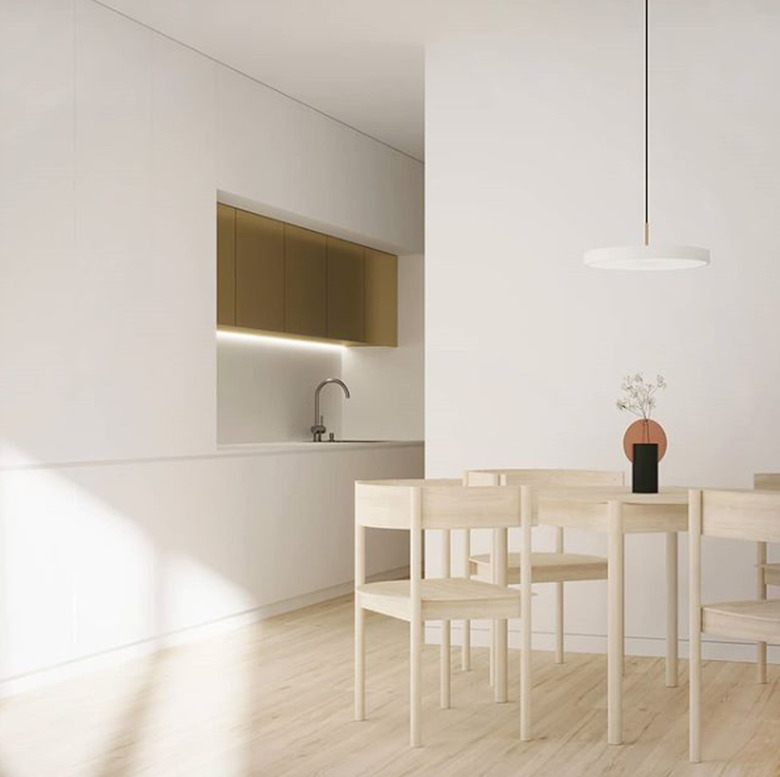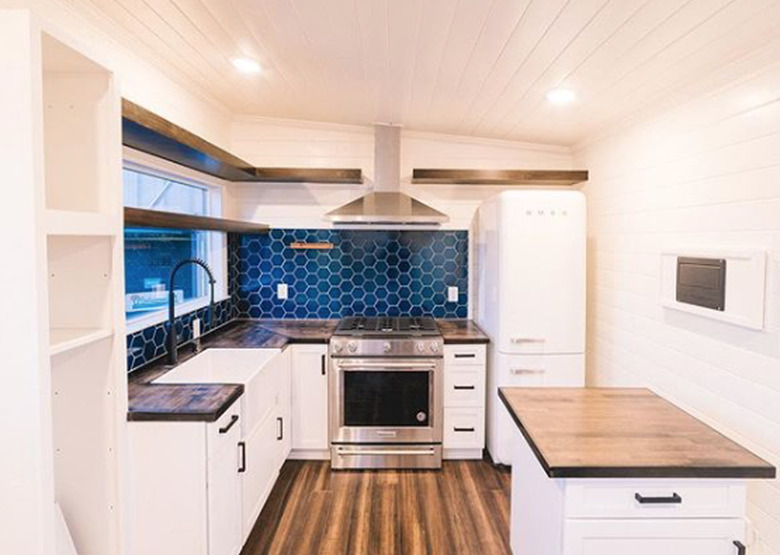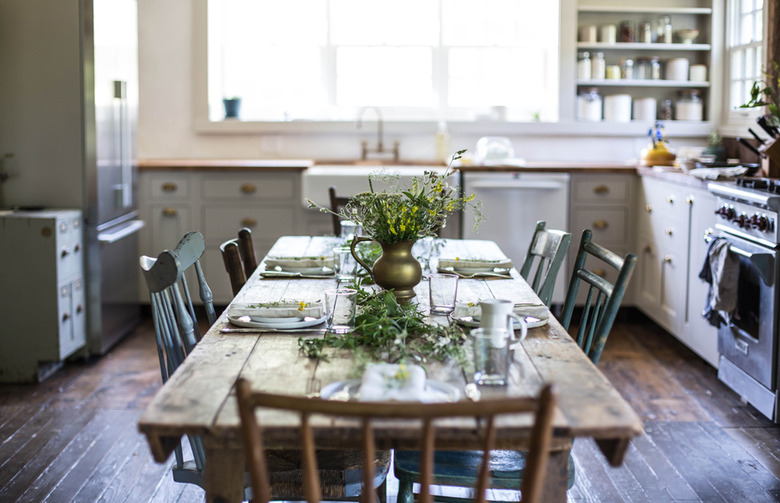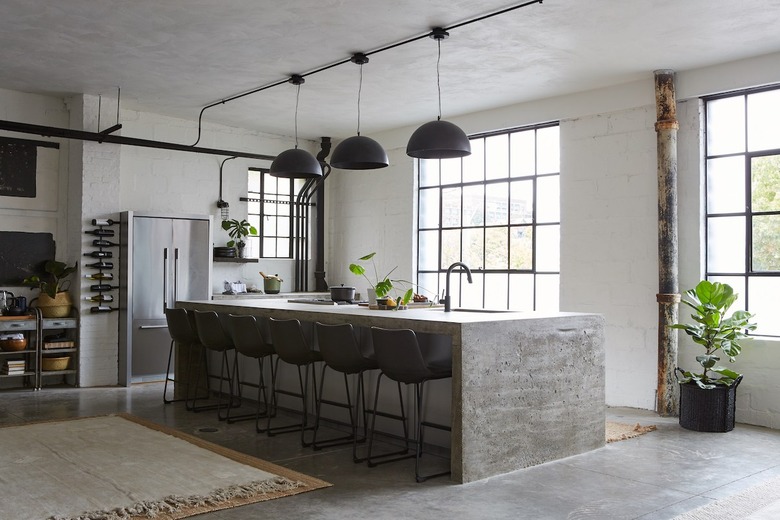5 Eco-Friendly Kitchen Flooring Ideas That Make It Easy To Be Green
Kitchen renovations are costly undertakings that can be equally hard on your wallet and the environment. Doing an entire overhaul with green products might not be realistic, but if you're looking to reduce the overall impact of your remodel, consider selecting eco-friendly kitchen flooring. As one of the largest elements in a renovation, choosing a material that's sustainable can go a long way in preserving the earth's natural resources and offering a clearer conscience. Not sure what options are viable for your cook space? Read on.
Linoleum
Linoleum
Surprise! Linoleum, yes, THAT linoleum that was all the rage in the early 1900s is, and always was, a low-cost, eco-friendly product made from renewable resources. These are two factors which have put linoleum on the comeback list. True linoleum, which is often confused with vinyl, is all natural. It's made from linseed oil, cork dust, wood flour, tree resins, ground limestone, and pigments, all pressed onto a jute backing. It can be burned as fuel once it's no longer being used and has several inherent properties that make it ideal for use in the kitchen: It's antimicrobial, naturally water-resistant, and quite resilient. It can be installed in sheets, tiles, or planks and comes in variety of colors and patterns.
Ensure linoleum has been properly sealed prior to installation to prevent ambering or discoloration. Once it's properly sealed, linoleum is relatively low-maintenance and can last more than 25 years. As previously mentioned, it is also budget-friendly, costing between $3-$7 per square foot.
Let go of previous conceptions you may have about linoleum — it's come a long way in appearance and durability. In this minimalist cook space by Shovk Studio, the eco-friendly kitchen flooring looks just like light wood and perfectly complements this minimalist space featuring gold upper cabinets, understated furniture, and a lone pendant light.
Pros:
Linoleum has a long list of things going for it, with price being one of the biggest draws. It's a low-maintenance product and when properly cared for, it can last practically a lifetime. It's made from renewable and raw materials and is highly recyclable, making it an environmentally-sound product. Plus, its inherent properties work to halt the breeding of many microorganisms. Additionally, this eco-friendly kitchen flooring can be refinished if stained or scratched, and it's naturally fire-retardant and holds heat, making it a great choice for colder climates.
Cons:
Linoleum can be damaged by prolonged exposure to water and direct sunlight if not properly sealed. It can also scratch and dull if not cared for properly. Linoleum didn't have a high-end reputation in the past, but people are starting to embrace it again.
Where to Buy:
Forbo has developed a proprietary version of linoleum called marmoleum which comes in an array of colors and patterns.
Bamboo Flooring
Bamboo Flooring
Bamboo is a durable, low-cost alternative to hardwood that's sustainably harvested and grows rapidly — in fact, once it's harvested, trees can reach full maturation again in just seven years. In comparison, most hardwood varieties take 40-50 years to regrow. Bamboo is actually a thick grass, but has many properties similar to wood, and offers the same durability. It should be dry-swept on a regular basis and mopped with a special bamboo-friendly cleaner. But keep in mind, because this eco-friendly kitchen flooring option is susceptible to water damage, spills should be wiped up quickly.
You should know that bamboo can contain high levels of urea formaldehyde, so before you purchase, be sure that it is certified "responsibly harvested" by the Forest Stewardship Council (FSC) and has no added formaldehyde. And since it is mostly harvested in the Pacific Rim, there can be a significant amount of pollution created to have it imported.
Depending on the variety, where it's sourced, and where it's manufactured, bamboo prices can range from $2-$8 per square foot.
Bamboo is a great eco-friendly kitchen floor idea that works beautifully in nautical-inspired spaces like this one spied at California Tiny Homes. A blue hex tile backsplash, tongue and groove wall treatment, and Shaker cabinets are enduring details that create a cheery kitchenette that's full of charm.
Pros:
High quality bamboo wears as well as, if not better than, wood and has relatively low upkeep requirements. It's a sustainable product (but sources and manufacturing practices should be confirmed before purchasing).
Cons:
Bamboo has a contemporary look that doesn't work with every design style. It's sensitive to humidity and can warp in temperature fluctuations. Plus, it is prone to dents and scratches depending on the variety, and it's not water-resistant.
Where to Buy:
Green Building Supply has a variety of bamboo flooring options in a range of colors.
Reclaimed Wood Floors
Reclaimed Wood Floors
If you're looking to create a home with a sense of history and a been-here-forever look without trying too hard, look no further than reclaimed wood flooring. This type of wood has been previously milled and is repurposed from old or soon to be demolished buildings. Using reclaimed wood gives new life to old timber, prevents new trees from being cut down, and keeps used wood from ending up in landfills, all of which make it an eco-friendly kitchen flooring option worth considering. But before you commit, make sure that any wood you use is independently certified by the FSC.
Simply put, reclaimed wood floors are beautiful and offer an unsurpassed patina that can't be replicated by newly harvested wood. They impart character and richness that works with a variety of interior styles from bohemian to rustic. And with the popularity of farmhouse-inspired interiors, there's been a surge in demand for reclaimed wood as of late.
Obtaining that vintage look comes with a price, though: Reclaimed wood is expensive, running from $5-$20 per square foot depending on the wood and finish.
It's hard to compete with the look and feel of reclaimed wood if you're looking for a timeless, eco-friendly kitchen flooring idea. In this cook space by Jersey Ice Cream Co., well-loved floors are the ideal backdrop in a cottage-inspired design featuring Windsor chairs, a farmhouse table, and aged brass hardware.
Pros:
Reclaimed wood has the structural and dimensional integrity lacking in fast-growth woods found today, but equally important, it imparts a sense of history that you just won't get with other materials.
Cons:
Price is one of the biggest barriers to installing reclaimed wood floors. Plus, the weathered material doesn't always work in contemporary or modern interiors.
Where to Buy:
Based out of Pennsylvania, Sylvan Brandt has a nice selection of reclaimed wood flooring salvaged from historic homes. They also sell antique hardware, windows, and doors.
Concrete
Concrete
Concrete is one of the most eco-friendly kitchen flooring options available. It's made predominantly of limestone, the most abundant mineral on earth, along with waste byproducts from power plants, steel mills, and other manufacturing facilities. While the sum of its parts are green, mixing these materials requires heavy machinery that emit carbon dioxide, so it isn't a perfectly green product. However, it can help to improve air quality and reduce waste. And a bonus: It lends a clean, sleek vibe to modern interiors and works equally well in industrial designs, too.
As you might imagine, concrete is extremely durable and resilient, making it a natural fit for hardworking rooms like kitchens, where spills and dropped dishes occur. Its strength, however, is hard on feet and legs and makes it a liability for potential tumbles.
If you want to cut down on your heating and cooling bills, you're in luck — concrete conducts temperature well. It remains cold naturally, which works in your favor if you live in a warm climate, and if it's heated with a radiant floor heating system, it will heat up quickly and retain the warmth. It needs to be sealed or waxed a few times a year to maintain a protective layer, but on a daily basis can be kept clean with a broom, mop, and neutral cleaning product. Due to its strength, concrete flooring can last indefinitely.
Concrete floors impart texture and character in modern interiors, as seen in this kitchen by Leanne Ford. Black pendant lights, exposed pipes, and steel windows all work together to create an industrial cook space with a masculine edge and plenty of natural light. Basic concrete floors start at $2-$5 per square foot.
Pros:
Concrete is made from readily available abundant materials, and it is highly durable and resilient. Plus, it's easy to keep clean and maintain, and it's virtually indestructible.
Cons:
On the downside, concrete can be hard on joints, making prolonged standing uncomfortable. Additionally, it imparts a visual coldness to interiors, and due to its heavy weight, it requires the appropriate substrate.
Where to Buy:
Concrete floors are mixed and installed onsite.
Cork
Cork
Your familiarity with cork might not go beyond that little stopper separating you from your favorite bottle of wine, but it's been used as a viable kitchen flooring idea for more than a century. Cork is manufactured from the bark of the cork oak tree — found predominantly near the Mediterranean — which renews itself every eight to 10 years. This means you don't have to feel guilty using this natural resource. Finished cork has the appearance of textured wood and can be installed as planks or tiles. It's much-loved for its natural "give" underfoot — a real boon in the kitchen, where hours standing can be hard on joints. However, this property also means it's prone to scratching and dents.
Cork has a lot going for it: It provides insulation against both the heat and cold, it's naturally repellent to mold, bugs, and mites, and it's fire-resistant, too. Most people don't realize this, but cork is available in a range of colors from light brown to reds to greens and even black. And at $3-$8 per square foot, its price is very comparable to hardwood.
When it comes to eco-friendly kitchen flooring options, cork adds warmth and texture to contemporary cook spaces, as seen here, without making a strong visual statement. Flat front cabinetry, clean lines and reflective surfaces keep the look streamlined.
Pros:
Cork has a natural give so it's easy on the joints, plus it stays "warm" underfoot and acts as an insulator. It is naturally resistant to mold, bugs, and mites, and if that wasn't enough, it's also cost-effective.
Cons:
Ironically, one of cork's biggest pluses is also one of its cons: Its softness makes it prone to scratches and, like carpeting, "dimpling" if something heavy is placed on it. It isn't water-resistant and requires specific cleaning products.
Where to Buy:
Green Building Supply has a wide range of cork products and sealers.
